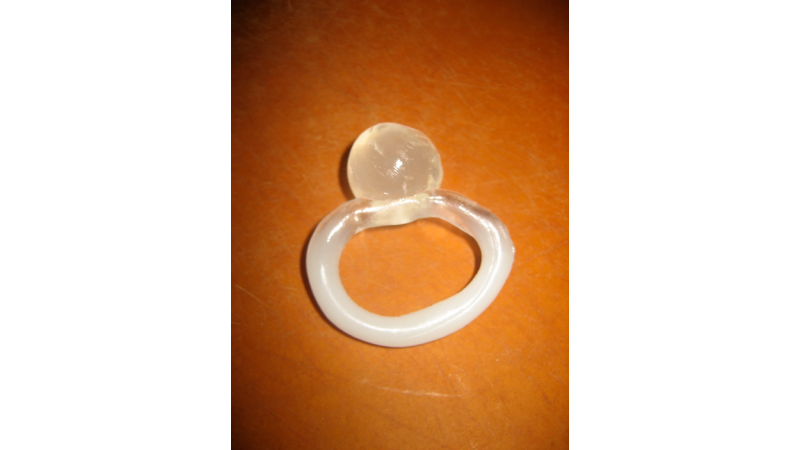How do you “weld” InstaMorph, also known as “sticking two pieces together”? The secret to all three methods is that both pieces of InstaMorph need to be at 140 deg F before pressing together. You’ll know when InstaMorph is “at temperature” because the pieces will turn clear. For larger pieces could take a little time, especially if the piece is cold, so be patient.
With the method described in this technique, you will be using hot water to bring the pieces up to temperature.
First, you’ll need a pot of water that is around 140 deg F. If you don’t have a thermometer, a good rule of thumb is if you see bubbles forming in the bottom of the pot, you’ve gone to far. Remove the pot from heat until the bubbles go away, and you should be at a good temperature. As always, when dealing with hot water and stoves, please be careful to avoid burns.
After you’ve heated your water, take the pieces that you are going to be “welding” and place them both in the water until the areas to be bonded turn clear. In this first example, we’ll create a ring by attaching two ends of a curved rod together.

We placed both ends in the water (being careful as we did this by hand), until the ends turned clear. Once this happened, we knew that the InstaMorph was hot enough to stick to itself.

Once we had a good connection, we let it sit until it cooled and became milky white again. That’s it, “welded” InstaMorph.

Our second example uses the ring we just created in the first. We are going to attach this ring to a pre-made ball of InstaMorph. Remember, it’s important that both pieces be at temperature before attempting to bond them. Since the ball is thicker than the ring, it will take a bit longer for the ball to heat up comparatively. The good news is, we do not need to heat the ball all the way through, just enough so the outside becomes clear, indicating we are ready to bond the InstaMorph.

After removing both the ball and the ring from the water (notice, we only heated up one part of the ring by only submerging that part in the water), we pressed them together.

After allowing it to cool, we were left with a super strong bond between the two pieces. If you do this right, you shouldn’t be able to twist or snap this connection apart, even with quite a bit of force. We weren’t.


